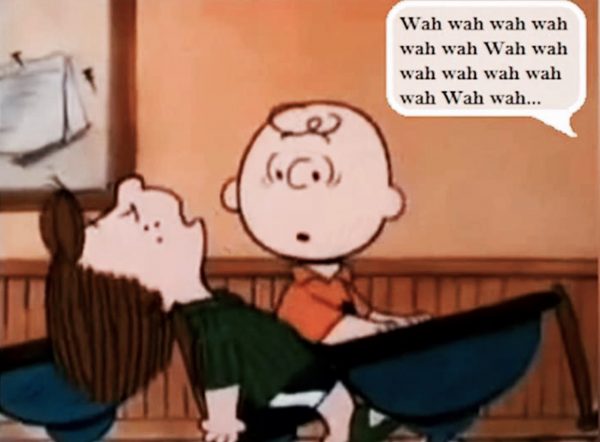Teaching At A Kindergarten In Japan Is An Incredibly Tough Job, And It May Well Be The Hardest Teaching Job Out There.
Kindergarten aged kids (2-6) are noisy, struggle to listen to anyone or anything for more than thirty seconds, and are extremely emotionally volatile. Simple things can make them burst into tears or grow restless, and once that happens your plans for your lesson go out the window as your class descends into chaos. If you are teaching kindergarten and have felt yourself coming close to tears, I know exactly how you feel and I’m here for you.

Kindergarteners in Japan
I taught kindergarten in Japan for 5 years, and was definitely thrown in at the deep end at both my first eikaiwa job and my third job at an international preschool. By the time I started teaching at Fuji Youchien in Tokyo (the one with the TED Talk), I’d had more than my fair share of monster classes. Over the years I’ve become really good at having a successful class in all but the most trying of circumstances. While completely scuppered lesson plans will always be a possibility with young learners, you can master a few critical skills to become a kindergarten teacher that all your students (and maybe some of the other teacher’s students too) will love and listen to.
Here are the top skills I’ve learned that help me to not only survive this age group, but actually love teaching kindergarten aged students.
Rule #1 – You Must Have a Positive Relationship With Your Students
This is the most important skill that will change everything for a kindergarten teacher. Think about it this way. You speak Japanese as your first and only language. You meet someone who speaks English and you can’t understand a word they say. Do you want to learn how to talk to them?
The answer depends entirely on whether you like that person. If you don’t like the only person in the entire world you know who speaks English, then your motivation to learn the language is going to be next to nothing, right? That is why I have always prioritised building positive and caring relationships with kindergarten students. They need to know that you love them and care about them, and they must enjoy being around you. Otherwise you have lost, and you will never teach them anything. This is the number one most important fact about teaching kindergarten that I hope you take away from this article.
What’s nice about this is that it isn’t hard to get kids to like you. I learned so much from a coworker at the international preschool I worked at in Nagoya. He was always really positive with his students, and so they loved coming to school to see him. They would run into his classroom and be greeted with hugs and positivity, and children respond so well to that.
All you need to do is be positive and loving, and this is especially true with the badly behaved children. Positivity is a game changer for them. I had one three year old student in my class named Sora. I was warned about him by the previous teacher of his class, that he was spoiled and his mother was really permissive and that I would have my hands full stopping him from being a menace to the class.
At our welcome sit down with all of the parents, we gave the students some clay to play with so they wouldn’t be restless and their mothers could actually hear all the things we needed to tell them. Not two minutes into our talk Sora threw his block of clay at one of the girls in the younger class, and she started crying. Sora’s mother took the ball of clay, said a quick “sumimasen” to the mother of the little girl… and then gave the clay back to Sora without a word!
I was ready from the start of every class to have a fight on my hands with this kid, but after thinking about it I had a lot of realisations and made a plan for this student. Sora loved attention. Whenever he misbehaved, I would ignore him, but when he behaved well I would give him tons of smiles and encouragement and hugs. He became one of the best students in my class, and his mother wrote me a letter at the end of the year saying that Sora was so kind at home, that he was helping out with his little sister and had become a really sweet boy. From the worst kid in the class to one of the best, I have replicated my experience with Sora to dozens of children and it is always the best way to go. I’m not saying that it was easy, and I definitely had days where I was livid because he had totally messed up classes, annoyed other students (who I also had to tell to just ignore him if he was being a nuisance). The only time I would strongly punish badly behaved students is if they hurt other students, and make them take responsibility.
Truly, I would say that for young kids punishments should be a last resort, not the first. Positive reinforcement is 100% better than negative reinforcement, and that is universally true, and it will also make you a happier teacher because you are being kind and caring rather than scolding kids all the time, which isn’t fun unless you are a sociopath.
Rule #2 – Master Curiosity Based Classroom Management
A lot of teachers try to hold the attention of a class of kindergarteners with threats. Teachers are bigger than the students, have a louder voice and can literally pick the kids up and throw them if they want. They can’t do that to you (though many will try). You must overcome the temptation to take the easy way out and be an authoritarian tyrant, as many teachers I have seen do. It doesn’t work, and for English teaching it really doesn’t work as the students will also hate you (see Rule #1).
Going back to my international preschool days, I learned and used a lot of the principles of Montessori Method to encourage my students to explore for themselves. The school had no curriculum and so I built a curriculum with the help of a few coworkers for a year of preschool classes, and we used a lot of Montessori principles when designing the classes. Encouraging and building your students curiosity about the world and the contents of your class is all about free play, and not about lecturing, giving instructions, or even entertaining the kids. Encourage their playful curiosity and you will have a successful class much more often.

Your classroom management is a reflection of what you want for your class, and here are a few methods that made the biggest difference to my classes in terms of holding students attention and encouraging playfulness and exploration in English:
Kindergarten aged children have an attention span of: age x 1 minute.
Children cannot pay attention to you while you ramble on and on. They can’t follow instructions that have more than a few steps. They don’t care what the goal is because their goal is always to have fun. If you insist that the super fun game that you spent ages printing out cards for and designing is great, but the kids don’t think so, guess what? Your game sucks (for this class at this time in this mood with the weather outside being like it is).
To maximise the power of your activities, be ultra clear in your head what it’s for, keep it really simple and then show the children how much fun it’s going to be. If it is fun and they are doing the thing that helps them reach the goals you have for the activity, that is a success.
Play little games with everything.
I mean everything; everything is a game for children! It is so much easier to hold children’s attention when you are making it silly and fun and goofy all the time. One example is that when I introduce something new, like a picture book or something I want the students to see, I hide it away from them. I put it behind my back and pretend like it’s the coolest thing I’ve ever seen. Then I’ll pick a student to show it to, and give them just the tiniest glimpse of it, then hide it again while giggling as though it was the funniest picture in the world. Children mirror older people so almost invariably the child I showed the picture to will start laughing or looking surprised, and then all the other kids want to see the picture too. Then when I reveal it, they get really excited! This leads me to my next point.
Control the excitement in the room with your voice and your energy.
Children are engineered to copy others around them. This is why a naughty child can be a bad influence on well behaved children. You have the power to control that excitement level by being an indicator of the energy level you want in the class.
I’ve met teachers who use a really monotone voice and use fear and some aggressive “teacher stare” to control their students. Sometimes the kids will sit well for that teacher, or do the activity, but they won’t enjoy it and they will lose motivation. After all, they are only following through with the tasks set for them because of fear of retribution. Tell me, when was the last time you enjoyed doing something you didn’t want to under the threat of punishment and force? You can’t make a child learn, but guess what? They naturally want to learn, so if you force them to you’re actually crushing their natural curiosity. Just let them be their curious selves.
So when you want to add some excitement to a mopey class, move around more. Jump around, speak faster and with more energy and expressiveness, and involve the kids in the stories you’re telling them. When the class is overhyped and has too much energy, you can bring it down by getting them to copy you in whispering voices, or by playing games that get them to be still or quiet. Freeze games work well, and I used to like this one where I would get the students to pretend to be asleep, and then when I shouted “snakes” they would all use their arms to push themselves up (like the yoga pose “upward facing dog” and hiss like snakes). This got some of that pent up energy out and got them to chill out a bit.
Kids need to move, sitting down is the worst!
Like I said, kids can’t pay attention for long. A good way to reset the clock is to have some fun active movement games ready when the kids seem restless. Jump up and play a very fast game of “find _____” and in the blank you can use “something yellow, round, soft, funny” or whatever else you like. Let the kids run around the classroom frantically looking for the number 4 or something. If you have the same classroom every time you teach, and if you have any control of decorations, you can put numbers, colours or pictures up on the walls at child eyesight level for them to find. After you do this for a few minutes you can get them to sit down again for another 2 minutes before you need to do something else.
Not only is this important to keep the energy levels in your classroom under control, but it actually helps children learn and lock in knowledge they have gained! This is called Total Physical Response (TPR) and if you plan activities that get kids moving and using the English they have learned not only by listening and speaking but by jumping and moving, you’ll be well on the way to an awesome class that the kids enjoy.

Touch your nose! Only one of these kids gets it…
This isn’t a waste of time – children need to move and if they are made to sit still they become anxious and irritable. I’ve seen a lot of teachers aggressively punish students until they learn that they have to sit down for a long time without making a fuss, but those children are not listening and they are not having fun, and in an English class that means that they are not learning. Add movement into your class as often as you can – it will help you and it will help your students.
Rule #3 – Don’t Do It For Them. Help Them Do It Themselves.
I see this a lot, especially with Japanese preschool teachers even in good schools. Teachers want the students to succeed and do it “right” but they don’t always remember what the goal of school is. We are helping to create independent and capable young people, and when we do things for them we rob them of teachable moments that can be a source of great pride for them. Children know very well when they are being patronised, and if you basically made their craft for them and then you say it’s very good, they know they didn’t make it and they will feel badly about it.
So let the kids fail, on a daily basis, and encourage them to try again. Not only will this help them become independent and confident learners who are willing to try new things, but it will also take a lot off your plate as their teacher because they will be more able to look after themselves.
Rule #4 – Use Clear Instructional Words and Body Language
Children aren’t as adept at picking out words in a string as you and I are, especially when it is in a foreign language. I’ve seen teachers speak to their ESL students the same way as they would to a native speaking child and use a lot of colourful phrases and colloquialisms that Japanese students will never have heard before and won’t understand. Some examples:
- “Wait wait wait what on earth are you doing would you just drop that for Gods sake…”
- “Stop stop stop stop stop.” (say really fast and you’ll see what I mean)
- “Would you PLEASE go and wash your hands? We’re going to have lunch soon ok?”
For EFL students you need to “chunk” the important parts into individual phrases or even words that they can clearly understand. Instead of the first one you can say “Put that down. Now.” and instead of saying stop over and over you say it once, clearly and firmly. “Stop.” Children can understand a lot from context and if you feel out of control and you are rambling, then you will sound like teachers do to the children in Charlie Brown.

“Wah wah wah wah…”
Another important tactic to use is getting down to the students level. If a child is running around and behaving badly and you need them to stop, shouting at them across the room may not work at all, which in turn could make you more angry because some teachers perceive a child not listening as a lack of respect. Actually it is a sign that the child is otherwise engaged, and you need to become the primary object in focus for them. Go up to the child, crouch down to their level and lightly hold their shoulders to face them towards you. Use firm and clear language to say what you need to say and get their agreement on what will happen. Shouting at a child from across the room rarely works unless you’re willing to make a scene, and at that point you’ve already lost.
Rule #5 – Always Have A No-Prep Activity Ready To Go
Children are crazy. Things happen in class and your lesson plans regularly fly out the window when things change. You have to learn to be calm, prepared and adaptable so you can continue the lesson. This will not only help with your students and ensure that they are still engaged in learning, but it will also help your reputation as a teacher in your school as someone who can pull a rabbit out of a hat when necessary. This also takes a lot off your shoulders when something goes wrong or schedules change, as you know you can have something else ready to go in case of an emergency.
A great kindergarten teacher I worked with in Fukuoka told me that there’s always a chance that things can go wrong in class, but that’s why we prepare for that, because it’s always a possibility. Be ready for it because it is guaranteed to happen sometime.
Teaching Kindergarten Is Not For Everyone, But It Can Be The Most Rewarding Teaching Job Out There
Children are very very sensitive to the mood of the room. If you don’t know what you’re doing, they will feel it, believe me. When you show lots of kindness to your students, build relationships with them and prepare well for your classes, you can really make a huge difference in your students lives. I’m really passionate about teaching and I really loved teaching kindergarten. Nowhere else do you have such a great connection with the students, and kindergarteners will show you so much love if you are someone they care about, and their improvements will be the most pronounced of any age you teach. Everybody wins when you are a loving and kind kindergarten English teacher.


